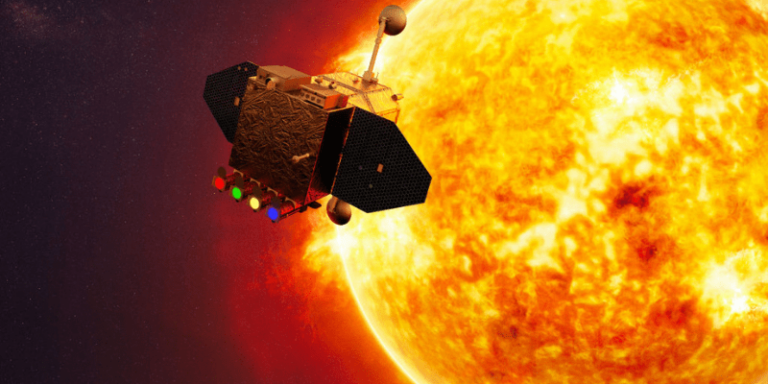The Spill: Solar Mission
Weekly news you can use.
By: GenZ Staff | February 12, 2020 | 663 Words

(Illustration by Adrian Mann/Future Publishing via Getty Images)
New Hampshire Primary
The United States is now in an election year, and the process of choosing candidates to run for the next presidency is gaining speed. The Democrats are competing in the caucus and primary process to run against President Trump in the November election.
After last week’s debacle in the Iowa Caucus, Democratic Party nominees hoped for smooth sailing in the New Hampshire Primary on February 11. Luckily there was less confusion this time, and the winner was Vermont Senator Bernie Sanders, who is known for his socialist beliefs. Second was former Mayor of South Bend, Indiana, Pete Buttigieg, who is more moderate in his political views. Minnesota Senator Amy Klobuchar, also a moderate, came third.
Other candidates didn’t do so well, with former Vice President Joe Biden and Massachusetts Senator Elizabeth Warren in fourth and fifth places. As time goes on, more candidates will be forced to admit defeat and the race will eventually be narrowed down to a single victor.
Some have begun to predict that the fight for the chance to run against President Trump during the election will end up being between two opposite groups in the Democrat party: the radical socialist Bernie Sanders and a more centrist candidate like Buttigieg or Klobuchar.
Is the future of the Democrats a socialist one or will they be tamed into a more moderate party?
Acquitted Trump Campaigning for 2020 Election
Last week, President Donald Trump was acquitted by the Senate in the impeachment trial. Republicans felt that a compelling case against the president had not been presented, and since they currently make up the majority of seats in the Senate, the president was found not guilty.
The negative publicity surrounding the impeachment may have affected Trump’s campaign for the next election, but the president appears ready to fight hard for a second term. While the Democrat primaries are getting lots of attention, most people assume that Trump will be the Republican nominee for president in the 2020 election. Unsurprisingly, the president has so far won both in the Iowa Caucus and New Hampshire Primary.
Donald Trump has become notorious for his rallies attended by thousands of his supporters. New Hampshire was no different. On the evening before voters headed to the polls, the president held a rally in Manchester, NH, in which he spoke of his accomplishments and mocked his Democrat opponents.
On the day of the primary, the president tweeted:
“Great being in New Hampshire last night. I would say that was the biggest political Rally in New Hampshire history. Incredible evening!”
Mission to the Sun
The sun is the center of our solar system and the primary source of energy for life on Earth – but how much do scientists know about this star? Astronomers are hoping to learn more about the sun with a mission that launched on Sunday, February 9.
In a collaboration between the U.S. National Aeronautics and Space Administration (NASA) and the European Space Agency (ESA), the Solar Orbiter craft was launched from Cape Canaveral Air Force Station in Florida.
 The aim is to study the sun up close and provide scientists their first-ever look at its north and south poles. However, astronomy is not for the impatient, as it will take two years for the craft to arrive in the correct position to start measuring solar activity.
The aim is to study the sun up close and provide scientists their first-ever look at its north and south poles. However, astronomy is not for the impatient, as it will take two years for the craft to arrive in the correct position to start measuring solar activity.
To achieve this, the orbiter not only needs instruments capable of measuring extremely high temperatures, but the craft itself also needs super high-tech heat shields. Dr. Michelle Sprake, with the European aerospace manufacturer Airbus, revealed that certain parts of the shielding are made “out of baked animal bones.”
Ultimately, scientists want to discover what drives the star and how this impacts the Earth. The magnetic forces of the sun affect Earth’s satellites, electricity grids, and even radio signals.
For more information, check out this video by NASA and the ESA:

















